Who is Dr. Gundry and why listen to him?
Dr. Gundry is an accomplished doctor and surgeon. During his 30 year career as a heart surgeon at Loma Linda University he completed thousands of operations. He actually holds the world record for the longest-surviving transplant of a pig’s heart to a baboon. He was even innovative, inventing some medical devices during his career.
Why did he write this book? Well, many of the patients who came to see him struggled with being over or underweight and always feeling sick, tired, in pain or no energy. Many of these patients thought they were eating healthy, yet they were taking an average of 7 drugs and there for heart surgery or some kind of autoimmune disease. Dr. Gundry himself was 70 pounds overweight, despite believing he was living and eating in a healthy way!
He is now convinced that most of what we’ve been told about healthy eating is wrong. For example, most people still believe that eating a whole grain bagel washed down with a glass of orange juice is a healthy breakfast! (It’s not, and we’ll learn why soon.)
The ideas presented in his book are based on Dr. Gundry’s experience advising his clients what to eat and then observing patterns of what helps in the lab test results, especially blood tests measuring triglyceride, cholesterol and other measures.
He says he’s found a diet or eating lifestyle that can make anyone feel more energized and live longer without weight issues. How? it all starts with lectins.
🤔 1. The Modern Health Paradox: Modern advancements have extended lifespan, yet many suffer from chronic illnesses
In the western world, there’s a feeling that we are healthier than past people. The news shows us new medical research, treatments and advances daily. However, these headlines obscure the truth about the average person’s health today.
It is true we are living longer than average. From 1960 to 2013, the average life expectancy rose about 10 years for someone living in America. In other words, if you’re born today, you can expect to survive 10 years longer than someone born in 1960.
Pretty good, right? Well, not exactly.
The truth is, this rise in life expectancy is mostly thanks to modern medicine becoming better at saving us from dying. Child mortality is a prime example of this. Today, only 6 out of every 1000 kids die before reaching one years old. Yet back in 1935, 56 kids out of 1000 died. That’s ten times more than today! And it’s mostly thanks to better medicines, treatments and hygiene.
Modern medicine has become very good at helping us not die when we’re really sick. And if we have a chronic illness, we can manage it through medications instead of dying. And if we have a bad heart valve or cancer, we can also avoid dying through sophisticated surgeries.
Yet aside from life expectancy, other health statistics paint a declining picture. Starting in the 1960s, there was a rise in obesity, diabetes, heart disease, cancers, arthritis, dementia, heart and autoimmune diseases.
So Dr. Gundry starts his book The Plant Paradox by posing a question: we are living longer, but are we living better? This is something really worth considering. Is it really worth it to postpone death and live 10 years longer if the last 30 years of our lives are a slow degeneration?
Our life expectancy has been rising, but so has the rate of obesity, diabetes, arthritis, heart disease, autoimmune diseases and many more. People often struggle with obesity, chronic pain or no energy. What can explain this paradox? Dr. Gundry says lectins are the secret culprit behind many of our rampant modern health problems.
❓ 2. What Are Lectins?: Understanding the proteins hidden in many plants that can affect health
The natural world is all about eating and avoiding being eaten. Many psychologists say the survival instinct is the most primal and powerful animal drive. And in order to survive, animals have developed all kinds of defences including claws, teeth and long fast legs.
Well, plants are no exception, they also want to avoid being eaten. It looks like they’re sitting there helplessly, but they’re not. Plants have also developed many sophisticated defence mechanisms through evolution.
First, plants have the simple physical defences. Like the hard shell of a walnut that protects the seed inside or the spiky branches of a rosebush that ward off herbivores. But that’s not all.
Plants also have sophisticated biochemical defences that are hidden at first sight. We all know some plants are poisonous. Other plants like poison ivy will give us a nasty rash. Or if you eat an inedible plant, you won’t die, but you’ll get very sick. We all know this.
Now what if many plants also had a hidden and more subtle defence mechanism, one that doesn’t make us sick today, but slowly and relentlessly undermines our health? This is what Dr. Gundry is proposing. He says there are things called lectins hidden inside many of the plants we eat every day, including many of the ones we all consider healthy!
Lectins are toxic compounds found in many raw plants, a type of carbohydrate-binding protein. Gluten may be the most well-known lectin today because of the whole gluten-free craze. While certain people are sensitive to gluten, Dr. Gundry says that gluten is just the tip of the iceberg and there are many more lectins which are slowly ruining our health.
Many of these lectins were designed by plants as protection against their most common predators: insects. The lectins were designed to sicken, paralyze or weaken any insect that tried to eat them. In fact, many genetically modified plants work this way, by borrowing lectin-producing genes from other organisms. Bt-Corn, for example, is a GMO corn that borrows a gene from a soil bacteria so that certain larvae now die eating it. Bt-Corn is widely grown in the US, fed to most livestock and used to sweeten soft drinks and baked good in the form of high-fructose corn syrup.
Of course, humans are thousands of times bigger than insects so there will be a much smaller effect, but perhaps eating these lectins regularly makes us feel unwell, foggy headed or wreaks havoc with our body’s gut and immune system.
Dr. Gundry says this is exactly what’s happening, and lectins are responsible for many of the health crises modern people are facing.
Lectin-Free Diet Sneak Peek
As a quick “sneak peek” at the Plant Paradox Diet, here’s a quick list of foods to avoid and to eat. We’ll explore and explain all these in more detail later.
Foods to Avoid (Contain Lectins)
- Grains including wheat, quinoa, rice and corn. This includes whole grain foods.
- Legumes like beans, soy, lentils, peas (also cashews and peanuts which are actually legumes)
- Nightshades like tomatoes, cucumbers, squash, sweet or hot peppers and eggplant
- Any industrially farmed meat or fish because they’re fed lectin-containing grains
Foods to Eat (Lectin-free)
- Cruciferous vegetables like broccoli, cauliflower, cabbage, kale and brussels sprouts
- Leafy greens like spinach and romaine lettuce.
- Certain oils including olive, perilla, coconut and sesame oil.
- Nuts: macadamia, walnuts, pecans, etc.
- Naturally-fed meat. Wild-caught fish, pasture-raised chicken and grass-fed beef
- Resistant starch foods like sweet potatoes, yams, and unripened bananas
Like any organism, plants don’t want to be eaten so they have many defence systems. This includes producing lectins designed to hurt insects who try eating them. Dr. Gundry says lectins also cause problems to the human gut and immune system and they are responsible for many chronic health problems modern people face.
🕒 3. The Problem With Lectins: Exploring the reasons why lectins have become a modern health issue
If lectins have been hiding in certain plants all along, then why are they only causing major health issues now? Dr. Gundry mentions several reasons in his book, but here are two main ones:
a) The Agricultural Revolution
For 5-8 million years the earliest human ancestors ate whatever they could find, forage or hunt. Food like roots, tubers, nuts, fruits, vegetables, leaves, fish, insects, deer, mammoths and so on.
Then around 10,000 years ago something big happened, the agricultural revolution. We realized that when you put food and seeds into the ground, that makes more food grow in a few months. This was the agricultural revolution and it caused cataclysmic changes to human diets, lifestyles and cultures. We began eating very differently.
Grains and beans became a primary part of our diets for the first time ever. Was this a positive change? In many ways it was. Rather than needing to go out and find tomorrow’s food every day, people could now reliably grow mass amounts of food. More importantly, we could store it for the future, providing security to us in winters, droughts and hard times.
Yet on the other hand, the early agricultural people actually took a couple steps back compared to their ancestors. First, living in cities promoted more spread of diseases and plagues. Also, there’s evidence from x-ray analyses of many Egyptian mummies that reveals many suffered from high levels of clogged arteries, osteoarthritis and tooth decay.
b) Discovery of the New World
Around 500 years ago, European people reached North America by ship for the first time. In this new world, they found thousands of new plants and animal species that again radically transformed their diets. For example, we usually think of tomatoes as Italian and potatoes as Irish, but both these foods only arrived 500 years ago! Even corn was never touched by a European before then.
What does this mean? Well, the first thing to understand is that evolution is a very slow process. For an animal to truly adapt to digesting a new food it can take millions of years. So 500 years is a blink of an eye. (Or even 12,000 years if you’re Native or South American.) This means every day we are eating new and unfamiliar plants that contain lectins that our bodies are unprepared to process.
If this is happening, then why haven’t humans noticed it before? Well, in the wild, an animal that feels unwell after eating a certain plant would learn to stop eating it…
Unfortunately, modern humans aren’t so savvy. Instead, if we eat something that doesn’t agree with us or makes us sick, we find or invent something—think Nexium, a stomach-acid reducer, or a drug such as ibuprofen that lessens pain—so we can continue to eat a substance designed to destroy, cause pain in, or at least weaken us.
The real solution to many chronic health issues is to eat the way our archaic ancestors did again. The kinds of foods humans have been eating and thriving on for millions of years. We can learn to avoid the lectin-containing plants brought on by the agricultural revolution and discovery of the new world.
🤢 4. Details of Lectins: How Exactly do Lectins Make Us Sick and Overweight?
In short, they confuse our immune system and make our body attack itself.
Here’s a slightly longer explanation: Your food travels through your intestinal tract and your body has a difficult job. It must allow some nutrients to pass through the intestine wall, but stop other unwanted molecules from invading your body.
When you eat certain plants, their lectins enter your intestinal tract where they attach to cells, creating a compound called Zonulin. The thing is, the wall around your small intestine is only one cell thick. It needs to be that thin to easily let nutrients exit. And usually it can hold together well, but Zonulin creates small holes in this wall. Unwanted molecules then begin “leaking” from your intestines to other parts of your body where they shouldn’t be, like your blood, soft tissue and brain.
At that point, it’s your immune system’s job to attack and get rid of these foreign molecules. But at this point, another thing that often happens is molecular mimicry: This means the foreign molecules look very similar to legitimate molecules in your body, just like in nature a stick insect disguises itself as something else to survive. Dr. Gundry says this is a purposeful strategy plants use to attack predators.
Since your immune system’s “radar system” can’t tell the difference between the foreign and native molecule, it begins attacking the ones you need too. It’s a type of “friendly fire.” Dr. Gundry says this is the true cause of autoimmune diseases which have been skyrocketing in the last 40 years and many other illnesses. Recent theories have also pointed to molecular mimicry as possibly responsible for a systemic low grade inflammation that might cause obesity and type 2 diabetes.
Now for a quick fact check:
Is what Dr. Gundry saying about lectins true?
This book has been roundly criticized by many sources: From online reviewers who say the book is poorly ghostwritten and he only wants to make money selling supplements… To credible critiques of his diet like an article by T Colin Campbell, author of the book The China Study. Campbell criticized some of the sloppy references in the book. Sometimes Dr. Gundry makes an argument with a reference number, but if you actually follow the reference, the study does not always prove what Dr. Gundry said. This makes it difficult to trust his more novel health claims.
On the other hand, there is proof that eating certain foods containing lectins increases intestine permeability and inflammation. For example, there’s good evidence that eating gluten increases intestine permeability, but only in patients with Celiac disease who are specifically sensitive to it. “Leaky gut” also seems to be a real health issue with negative consequences, but few scientists or doctors would say it’s a primary cause of most major diseases.
In short, there really is a lack of evidence. If you follow The Plant Paradox Diet, you will undoubtedly be eating extremely healthy, but is it really necessary to cut out all grains and legumes to be healthy? Probably not. Although if you have some type of autoimmune disease, then this diet could be a lifesaver, as many of the examples used in the book were his patients with some kind of autoimmune disease.
A Quick Word on NSAIDs
NSAIDs, short for non-steroidal anti-inflammatory drugs, are today very popular to relieve mild pain, fever and inflammation. These drugs include:
- Ibuprofen under the names Advil and Motrin,
- Naproxen under the name Aleve,
- Celebrex and many others.
These NSAIDs were developed in the 1970s and marketed as a safer alternative to aspirin, because long-term use of aspirin had been found to damage the stomach lining. The drug companies celebrated finding a new alternative.
However, what really happened was the gastroscopes being used at the time could only look as deep as the stomach lining where aspirin was doing damage, but they couldn’t look deeper into the small intestine. Using new technologies like pill cameras, it’s now clear that NSAIDs damage the mucosal lining deeper in the small intestine. This lining is our first line of defence, slowing down and stopping lectins and other foreign particles from breaching our gut. This means if you take NSAIDs too much, then you will probably have even more issues with foreign molecules escaping your gut.
The good news is, there are a couple natural alternatives to NSAIDs like boswellia and white willow bark. Studies have shown these can help to reduce inflammation and mild pain, so it’s worth trying them out instead.
In your intestinal tract, lectins attach to cells and create a compound called Zonulin. Zonlulin opens tiny holes in your intestinal tract that allows unwanted molecules to invade your body, then your immune system tries to attack these molecules but often ends up attacking your body itself. This creates autoimmune diseases and Dr. Gundry says most health issues.
🌾 5. Avoid Grains and Legumes: Avoid foods high in lectins, including grains, legumes, and industrially processed meat
Now we’ll dive into the practical aspects of the food, which is what to eat and not eat. Rule number one in the book is:
RULE NUMBER ONE: What you stop eating has far more impact on your health than what you start eating.
And here are three major categories of food that Dr. Gundry says everyone should stop eating:
- a) Grains like wheat, rice, corn and oats
- b) Legumes like beans, soy and peas
- c) Modern industrial meat
Let’s start with the first one.
a) Grains like wheat, rice, corn and oats
Since the Agricultural Revolution, grains have been a foundation of human diets. Most people in the world eat staple foods like bread and rice every single day. Yet Dr. Gundry says these foods are high in lectins and should be avoided.
Recent health books like Wheat Belly by Dr. William Davis and Grain Brain by Dr. David Perlmutter have shone a light on some of the negative effects of grains, especially on the human brain. Yet this is a relatively unpopular contrarian point of view compared to mainstream health advice.
The official food pyramid used to recommend 6-11 servings of grains every day, more than any other food group! We now know that advice was terrible, but mainstream medical authorities like the MayoClinic still say grains are a healthy part of a diet, especially whole grains which are higher in fibre and nutrients than processed grains.
Yet are whole grains really healthier? It seems like “common sense” now, yet Dr. Gundry points out that in Asia for thousands of years people ate white rice. And places like China, Japan and Korea traditionally have had lower obesity, heart disease and diabetes rates compared to Western countries.
Dr. Gundry says more lectins are actually found in the outside bran of rice. Therefore white rice contains less of a hit of lectins and the same is true for other traditional “white” foods like French baguettes and Italian pasta. Maybe all these cultures processed their grains for hundreds of years because they could feel it was easier for their bodies to process?
b) Legumes like beans, soy and peas
Legumes like beans, soy, peas, lentils and chickpeas contain more lectins than any other food. Peanuts and cashews also happen to fall into this category of legumes, as they are not really nuts.
Lectins are the reason why raw beans are so toxic. Eating just 5 raw kidney beans will clog the red blood cells in your body within minutes causing nausea, vomiting and diarrhea. The Center for Disease Control says that 20% of food poisoning cases in the US are caused by undercooked beans!
The good news is, properly cooking beans will remove most of these lectins and make them safe to eat. Dr. Gundry says you should use a modern one-touch pressure cooker to really make sure all the lectins are gone. He says if you pressure cook legumes, later you can slowly introduce some back into your diet.
c) Modern industrial meat
Most of the meat in your local supermarket was fed a lectin-heavy diet. The cows weren’t wandering around fields chewing grass, they were fed corn, soy and other grains in a cramped warehouse. The chickens weren’t pecking for insects and seeds outside, they were fed—again—corn, soy and wheat. Even some fish farms are beginning to switch to corn, rather than feeding larger fish their more natural diet of fishmeal and fish oil.
Does this matter? Yes.
What an animal eats changes the nutritional content of its meat. For example, carnivorous fish like salmon that eat smaller fish have far more Omega-3 content than when they’re fed an unnatural diet high in grains. And a big reason people want to eat fish is to consume those healthy Omega-3 fats. On top of this, Dr. Gundry says that when chicken or cows eat grains, all those lectins from the grains end up in their meat, and then you eat it. This is even true for ‘organic’ meats, which just means the animals ate organic grains full of lectins.
RULE NUMBER 4: You are what the thing you are eating, ate.
Another thing to think about: A farmer’s goal is to make their animals big and plump enough to sell in the quickest and cheapest way. All farmers know cows don’t get fat eating grass outside. Even pigs are relatively lean animals when living in nature as wild boars. So if grains and corn are the most efficient way of making farm animals fat, what effect do you think they have on humans?
Avoid grains like wheat, rice and corn because they contain many lectins, this includes whole grains. Also avoid legumes like beans, peas and soy, unless you pressure cook them which disables the lectins. Also avoid most supermarket meat that is fed grains. Go for grass-fed beef, pasture-raised chickens or wild-caught fish instead.
🥑 6. Eat Good Fats: Consume more healthy fats and vegetables, less sugar and processed carbohydrates
Most people don’t know that our bodies can actually burn two different types of fuel for energy, either sugar or fat. This is called metabolic flexibility.
The first type of fuel is glucose which is a type of simple sugar. When you eat foods high in sugar or carbohydrates like fruits, white potatoes, bread and pasta, then your body runs on glucose. Normally this wouldn’t be a problem, but because the modern person’s diet is so high in sugar and carbohydrates, these constant spikes in blood sugar provoke a chronic insulin response and chronic inflammation. This is what eventually leads to type 2 diabetes and chronic inflammation seems to be a big contributor to most diseases, especially in old age.
The second type of fuel is ketones, a type of fat. If glucose isn’t available, then the mitochondria in your cells switch to burning ketones. There is good scientific evidence that this leads to quicker weight loss and improved brain function. If you follow the Plant Paradox diet, which is high in vegetables and healthy fats, then this fuel change will naturally happen.
Is fruit as bad as candy?
In the past, health advice often recommended eating more “fruits and vegetables” as if they were one category of food. In reality, fruits contain a lot of sugar in the form of fructose and we already know why it’s important to eat less sugar, natural or not. Fruits do contain some fibre and nutrients, but nothing that isn’t more available by eating vegetables.
Although fruit is natural, the way modern people eat it is not. Before modern supermarkets, humans would only eat fruit when it was ripe and in season, which generally means a few weeks or months before winter. During fruit season, animals tend to gorge and eat as much fruit as possible. This was probably a good survival strategy for making it through winter. It’s probably no accident that our close relatives great apes “are highly efficient at storing fat during fruit-rich periods.” However, in modern society, a high-sugar food that we are designed to gorge on is probably contributing to the obesity epidemic.
Dr. Gundry does say you can eat certain green/unripened tropical fruits like bananas, mangoes and papayas. When unripe, these fruits have much lower fructose/sugar content and also contain good resistant starches.
Dr. Gundry Recommended Food List:
So we’ve talked a lot about what NOT to eat. Now here’s a quick and rough list of what foods you SHOULD eat to follow a lectin-free diet. Dr. Gundry also published a great food list on his own website.
- Cruciferous vegetables, as many of them as possible including: Broccoli, cauliflower, brussels sprouts, cabbage, bok choy and kale.
- Leafy greens, as many as possible including: spinach, romaine lettuce, arugula, etc.
- Other vegetables including carrots, onions, garlic, celery, radishes, artichokes, asparagus, mushrooms, etc.
- Herbs like cilantro, basil, parley and mint.
Also eat a lot of good fats like:
- Nuts: especially pistachios, walnuts, macadamia nuts and pecans.
- Oils: Extra-virgin olive oil, avocado oil, coconut oil, flaxseed oil, sesame seed oil, Thrive algae oil, perilla oil and MCT oil.
- Perilla oil: Dr. Gundry is a big fan of this. Very popular in asian countries like Korea, but virtually unheard of in America. Has one of the highest proportions of Omega-3 fatty acids of any vegetable oil.
- MCT oil: short for “medium chain triglycerides,” this oil usually comes from coconut oil and has many proven health benefits.
- Fish and shellfish, preferably wild-caught. This includes sardines, herring and salmon. These contain the healthy Omega-3 type of fats in large amounts.
Avoid ‘nightshade’ vegetables like tomatoes
There’s a specific category of vegetable that Dr. Gundry says most people should avoid. These are the so-called nightshades which are vegetables from the New World that contain many lectins, especially in the skin and seeds. These include:
- Tomatoes
- Eggplants
- White potatoes
- Peppers, both sweet and spicy
- Squash
- Zucchini
When you eat too many fruits, white potatoes and carbs, then your body runs on glucose/sugar. Too much of this can lead to diabetes and chronic inflammation, a factor in many diseases. When you eat green vegetables, nuts and healthy oils, then your body runs on ketones, a type of fat. Studies show this contributes to faster weight loss and better brain function.
🦠 7. Gut Health: Maintaining a healthy gut microbiome is crucial for overall well-being
Did you know there are hundreds of trillions of little organisms living inside your intestinal tract, inside your mouth and on your skin? The average person has 1.5 kilograms of bacteria living in their gut, what Dr. Gundry calls our “gut bugs.” Sounds gross, but we actually have a symbiotic relationship with these microbes, which means they’re good for us. We feed them and in return they help us break down certain foods that we can’t digest on our own.
Some scientists are starting to believe these gut bugs are part of our immune system too, helping keep our bodies safe. Experiments done raising germ-free mice without a microbiome show they live shorter lives, grow smaller and get sick easier.
Until recently, most doctors and scientists hadn’t known about the importance of the microbiome. Yet there is increasing evidence that keeping our gut microbiome balanced properly is a critical part of health.
For example, there is a growing evidence that our gut microbes control what foods we crave. How? Our gut bugs are constantly sending and receiving signals with our brain. Hard to believe, but science says it’s true. There are more neurons in our guts than any other place in the body, aside from the brain itself. That’s why doctors have started to call this “our second brain.”
This is quite a shocking discovery and a little creepy. It means we have feelings and desires about what to eat that are not controlled by us, but little microbes inside us. An article published by UC San Francisco scientists put it this way:
Microbes in the gastrointestinal tract are under selective pressure to manipulate host eating behavior to increase their fitness, sometimes at the expense of host fitness.
Translating this to plain English, Dr. Gundry explains that an obese person will usually have bad gut bugs that make them crave junk food. They eat the junk food, which feeds the bad gut bugs, resulting in more cravings. A vicious circle.
However, it’s also possible to change which gut bugs you have. If you eat healthy foods and probiotics, then you will literally starve the bad bugs out of your system. They will be replaced with good gut bugs that thrive on salads and smoothies and make us crave more of them. Dr. Gundry says he’s seem many patients who before could only enjoy eating meat and potatoes, but after a few weeks on a healthy diet they are amazed they begin craving salads! That’s why Dr. Gundry’s second rule is:
“RULE NUMBER 2: Pay attention to the care and feeding of your gut bugs, and they will handle the care and feeding of you. After all, you are their home.
So let’s talk about how to nurture your good gut bugs. This will include:
- Probiotics
- Prebiotics
- Vitamin D3
- Avoiding (most) artificial sweeteners
a) Probiotics
You’ve probably already heard of probiotics. These are living good bacteria found in certain foods and they can help repopulate your body with good gut bugs. These are naturally found in fermented foods like yogurt, kefir, sauerkraut, kimchi, miso, kombucha tea and so on. If you’re buying yogurt, just make sure the package says it contains “active” or “live” bacterial cultures. If they’re dead, they can’t move into your gut.
There are also probiotic supplements you can take in pill form. They’re a good idea and you’ll find them in any pharmacy, but we don’t have time to explore those here.
b) Prebiotics
Prebiotics are like fertilizer, preparing the soil for your gut bugs to grow more easily. Prebiotics are non-digestible carbohydrates, which means you can’t digest them, but your gut buddies can. They are found in:
- Resistant Starches. Found in yams, sweet potatoes, turnips, parsnips, plantains, taro root, celery root, and some unripe tropical fruits like green bananas, mangoes and papayas. Regular starches like those found in white potatoes are very quickly digested by our bodies and create unhealthy blood sugar spikes. These resistant starches, on the other hand, can’t be digested by you, that’s why they’re called ‘resistant.’ Instead, your gut buddies feed on them, converting them into fats for your body to use as fuel.
- Inulin. This is a type of fibre found naturally in certain roots and plants, including many of the vegetables on the plant paradox diet. It’s also found in Just Like Sugar, a sweetener made from chicory root that is primarily inulin.
- Psyllium Powder/Husks. You can buy this powder on its own, but it’s also the active ingredient in many laxatives like Metamucil.
c) Vitamin D3
Even in Dr. Gundry’s practice in sunny California, 80% of his patients are deficient in vitamin D3, yet it’s essential to improving our gut health. It helps us grow enterocyte stem cells which repair our gut wall barrier.
As a rough guide, Dr. Gundry says to take 5000 IUs of Vitamin D3 every day. Many people need more, but it’s best to do that under advice and observation of a doctor.
d) Avoid Most Artificial Sweeteners
People wanting to lose weight are told by marketers that artificial sweeteners will help them do so. On the surface, it does sound like a good idea. These sweeteners like aspartame, sucralose and saccharin don’t contain calories like regular sugar. And calories lead to weight gain, don’t they?
Unfortunately, studies done on people consuming artificial sweeteners and diet drinks don’t show any clear benefits. At best, the results are muddled, with some studies showing weight gain and other slight weight loss.
One reason for this paradox may be emerging from the fog. Recent studies have shown that common artificial sweeteners change the balance of gut bacteria in your body. They cause an imbalance of gut bacteria that seems to assist weight gain.
Good alternative artificial sweeteners to use in moderation are:
- SweetLeaf Stevia
- Just Like Sugar
- Sugar alcohols like xylitol or erythritol
Our intestinal tracts are covered in hundreds of trillions of microbes or “gut bugs.” These not only digest food for us, but control our cravings. Too many of the bad gut bugs and we’ll crave junk food making losing weight very difficult. To nurture good gut bugs, eat probiotics found in fermented foods, eat resistant starches, take Vitamin D3 and avoid most artificial sweeteners.
⏳ 8. Limit Animal Protein: Reducing animal protein intake and fasting for may increase your longevity
Scientists gave the name ‘blue zones’ to small areas of the world where people live much longer and healthier than average, like an unusual percentage of people living older than 90 and 100 years old.
These zones include:
- Sardinia in Italy,
- Okinawa in Japan,
- Icaria in Greece,
- The Seventh-Day Adventists in Loma Linda, California USA,
- and Nicoya in Costa Rica.
Well, several years ago, author Dan Buettner wrote a book called The Blue Zones. He wanted to find out why people living in these zones were so healthy. At first glance, these communities didn’t seem to have much in common. They’re scattered all over the world and have wildly different cultures and religion. Yet careful analysis reveals certain habits and tendencies the Blue Zones all share.
First, they eat mostly plant-based diets, which means they limit animal protein. For example, the Seventh-Day Adventists community in California are strict vegetarians due to their religion, they live much longer than their American neighbours even in the same state.
Some recent diet trends have championed meat and protein, notably Atkins, Paleo and Keto. For example, someone following the Paleo diet tries to eat like a caveman living in the Palaeolithic era. They cut out all processed foods, sugar and carbs. Yet they also eat steaks and bacon, the argument being that our ancient ancestors would also have been roasting bacon on an open fire therefore our body is optimized for this kind of diet.
But Dr. Gundry says that in all likelihood, our ancestors probably weren’t dining on buffalo steaks every night. Their diets would probably have consisted of tubers, fruits, nuts and smaller protein sources like fish, lizards and insects, with the occasional hunting kill.
What does science say? Well, when you eat too much meat protein or sugar your liver produces a hormone called IGF-1, short for insulin-like growth factor. Studies on both animals and humans have shown that low IGF-1 levels are correlated to living longer and less chance of cancer.
Dr. Gundry recommends eating no more than two 4-ounce portions of animal protein per day. That’s the size of about two decks of cards. Also eat more of your protein from fish and shellfish. The healthy omega-3 fats in them can give you better heart health and slower brain decline. It’s no accident people in the Blue Zones of Sardinia and Icaria often eat fish.
Fasting Gives Your Body a Chance to Rest
Eating less calories leads to a longer life. This fact has proven true for every single animal the experiment has been performed on. In particular, a 25-year study of rhesus monkeys found that monkeys who ate 30% fewer calories lived significantly longer than the control group. Other studies have shown fasting has many other health benefits like lower weight and less blood pressure.
People living the the Blue Zones are more likely to eat in moderation and fast. For example, the Okinawa people in Japan have a rule called “hara hachi bu” which means they stop eating when they feel 80% full rather than totally stuffed. And people in the Icaria are mostly Greek Orthodox Christians, a religion which has many holidays throughout the year with mandatory fasting require fasting throughout the year.
Fasting is the beginning and foundation of every spiritual activity.
– Symeon the New Theologian
Dr. Gundry often recommends his patients fast two times per week, cutting their calories to around 600 on these two days. It’s easiest to do this on Mondays and Thursdays and he says patients tend to lose 1lb per week by following this routine.
High meat consumption can raise IGF-1 levels, which are correlated to shorter lifespan and cancer. Eat no more than two 4-ounce portions of animal protein per day, that’s the size of about two decks of cards. Fasting a couple days per week can also help you live longer and lose weight, according to science.
Conclusion
Dr. Gundry’s book The Plant Paradox contains a wealth of good advice for improving health, living longer and losing weight. If you follow his diet, you will be healthier, there’s no question about it.
However, his core hypothesis of lectins being at the cause of all disease has been roundly criticized by other doctors and nutrition authorities. It seems like strictly eliminating all lectins may be the right path only for those with serious autoimmune illnesses. In the end, Dr. Gundry recommends eliminating all lectin foods at first and then slowly reintroducing them one-by-one in small amounts to see if you’re sensitive.

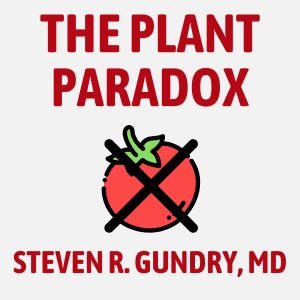
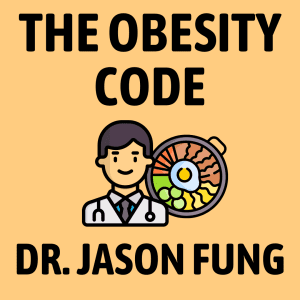
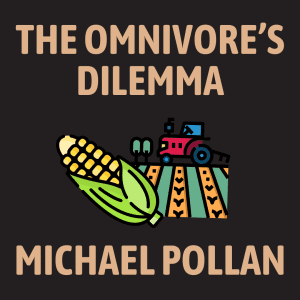
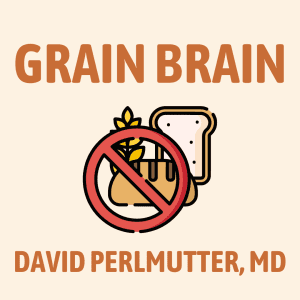
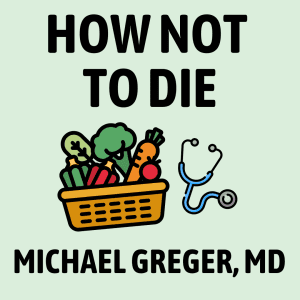
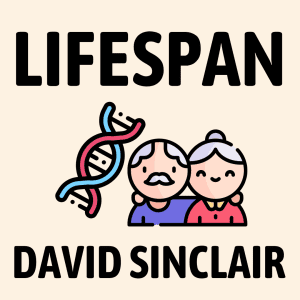













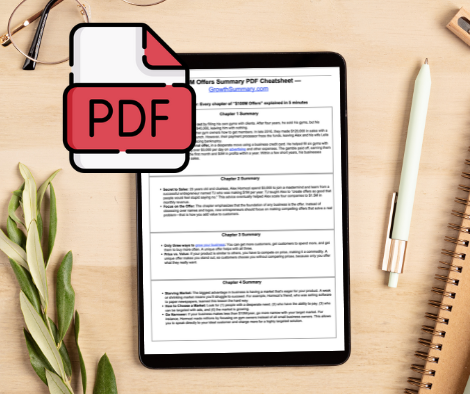
I found this to be hugely interesting. Thank you
You contain multitudes : about 90% of the cells in your body are non-human microbes, most of which you need to survive because they are the ones which convert the food you eat into energy.